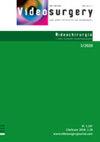对随机对照试验进行荟萃分析,比较肠道免疫营养(EIN)和标准肠道营养对胃癌胃切除术患者的生化、免疫和临床疗效,并调查肠道免疫营养配方的证据网络
IF 1.9
4区 医学
Q2 SURGERY
引用次数: 0
摘要
导言对于接受胃切除术的胃癌患者,最近的研究表明,肠内免疫营养(EIN)比肠内营养(EN)更能提高宿主免疫力,进而改善预后。材料和方法对 Medline、EMBASE、Scopus 和 Cochrane 图书馆数据库进行了全面检索,找到了经同行评审的英文期刊论文。计算了几率比(OR)和标准平均差(SMD)及其 95% 的置信区间。使用 Cochrane Q 和 I2 统计量及相应的 p 值评估异质性。分析使用RevMan 5.3。结果该荟萃分析包括10项RCT,涉及1409名GC患者,其中714人被分配到EIN治疗,695人被分配到EN治疗。EIN治疗后,血清原白蛋白、血清转铁蛋白、淋巴细胞计数和CD4+/CD8+比值的标准化均值差异(SMD)分别为2.39、2.39、1.34和0.72,具有统计学意义。EIN可减少术后感染并发症,感染的OR值为0.63(95% CI:0.41-0.77),并发症的OR值为0.63,全身炎症的SMD值为-1.05。通过高质量数据的网络图和定义明确、连接一致且准确的网络设计,可以看出EIN可以改善血清蛋白水平、免疫学参数和术后问题。结论在接受大型消化道手术的GC患者中,使用EIN已被证明可以增强细胞免疫、调节炎症反应和减少术后并发症。本文章由计算机程序翻译,如有差异,请以英文原文为准。
A meta-analysis of randomized controlled trials comparing enteral immunonutrition (EIN) and standard enteral nutrition regarding biochemical, immunological, and clinical outcomes in gastrectomy patients with gastric cancer and investigating evidence networks for EIN formulae
Introduction
For patients with gastric cancer who have undergone gastrectomy, recent research has shown that enteral immunonutrition (EIN) is more successful than enteral nutrition (EN) at boosting host immunity and, in turn, improving prognosis. The claimed outcomes, however, are inconsistent.
Aim
This meta-analysis examines how EIN affects biochemical, immunological, and clinical outcomes for gastrectomy (GC) patients following gastrectomy and EIN formulae evidence networks.
Material and methods
A comprehensive search of the Medline, EMBASE, Scopus, and Cochrane Library databases identified English-language peer-reviewed journal papers. The odds ratio (OR) and standard mean difference (SMD) were calculated, along with their 95% confidence intervals. The heterogeneity was assessed using Cochrane Q and I2 statistics and the appropriate p-value. The analysis used RevMan 5.3.
Results
This meta-analysis included 10 RCTs involving 1409 GC patients, 714 of whom were assigned to EIN and 695 to EN. After EIN treatment, serum proalbumin, serum transferrin, lymphocyte count, and CD4+/CD8+ ratio had statistically significant standardised mean differences (SMDs) of 2.39, 2.39, 1.34, and 0.72, respectively. EIN reduces postoperative infectious complications with an OR of 0.63 (95% CI: 0.41–0.77) for infections, an OR of 0.63 for complications, and an SMD of –1.05 for systemic inflammations. A network diagram with high-quality data and a well-defined network design with consistent and accurate connection shows that EIN can improve serum protein levels, immunological parameters, and post-operative problems.
Conclusions
The use of EIN has been shown to enhance cellular immunity, regulate inflammatory response, and decrease postoperative complications in GC patients who underwent major GI surgery.
For patients with gastric cancer who have undergone gastrectomy, recent research has shown that enteral immunonutrition (EIN) is more successful than enteral nutrition (EN) at boosting host immunity and, in turn, improving prognosis. The claimed outcomes, however, are inconsistent.
Aim
This meta-analysis examines how EIN affects biochemical, immunological, and clinical outcomes for gastrectomy (GC) patients following gastrectomy and EIN formulae evidence networks.
Material and methods
A comprehensive search of the Medline, EMBASE, Scopus, and Cochrane Library databases identified English-language peer-reviewed journal papers. The odds ratio (OR) and standard mean difference (SMD) were calculated, along with their 95% confidence intervals. The heterogeneity was assessed using Cochrane Q and I2 statistics and the appropriate p-value. The analysis used RevMan 5.3.
Results
This meta-analysis included 10 RCTs involving 1409 GC patients, 714 of whom were assigned to EIN and 695 to EN. After EIN treatment, serum proalbumin, serum transferrin, lymphocyte count, and CD4+/CD8+ ratio had statistically significant standardised mean differences (SMDs) of 2.39, 2.39, 1.34, and 0.72, respectively. EIN reduces postoperative infectious complications with an OR of 0.63 (95% CI: 0.41–0.77) for infections, an OR of 0.63 for complications, and an SMD of –1.05 for systemic inflammations. A network diagram with high-quality data and a well-defined network design with consistent and accurate connection shows that EIN can improve serum protein levels, immunological parameters, and post-operative problems.
Conclusions
The use of EIN has been shown to enhance cellular immunity, regulate inflammatory response, and decrease postoperative complications in GC patients who underwent major GI surgery.
求助全文
通过发布文献求助,成功后即可免费获取论文全文。
去求助
来源期刊
CiteScore
2.80
自引率
23.50%
发文量
48
审稿时长
12 weeks
期刊介绍:
Videosurgery and other miniinvasive techniques serves as a forum for exchange of multidisciplinary experiences in fields such as: surgery, gynaecology, urology, gastroenterology, neurosurgery, ENT surgery, cardiac surgery, anaesthesiology and radiology, as well as other branches of medicine dealing with miniinvasive techniques.

 求助内容:
求助内容: 应助结果提醒方式:
应助结果提醒方式:


